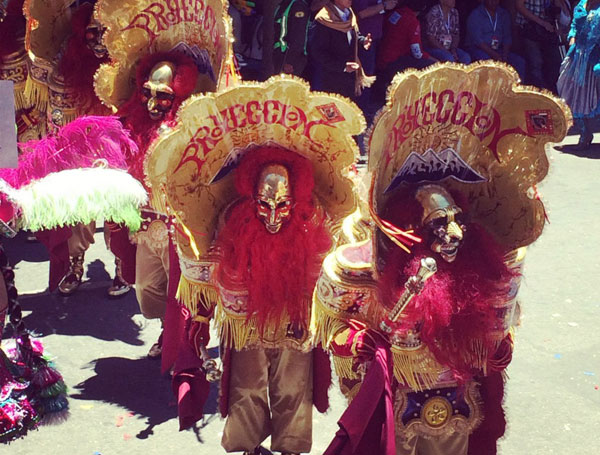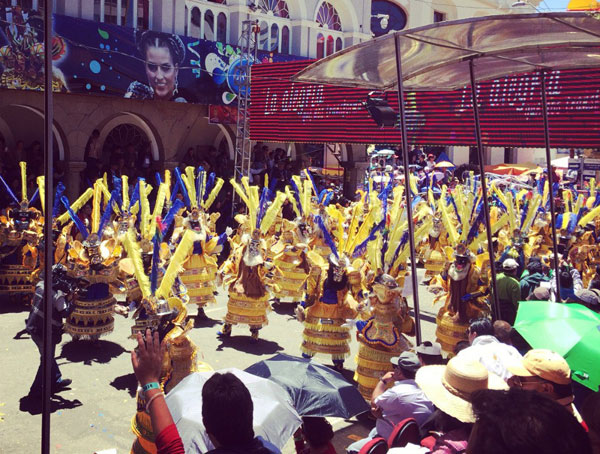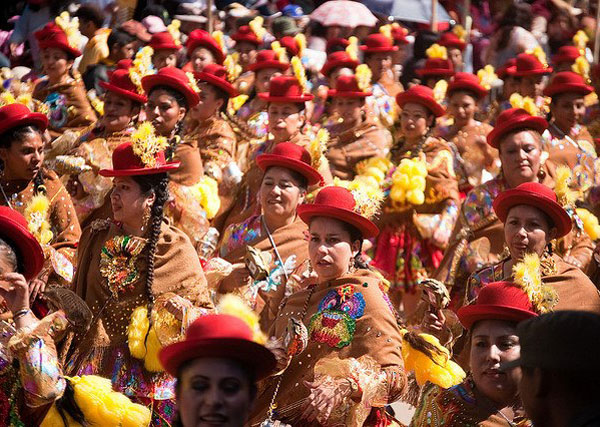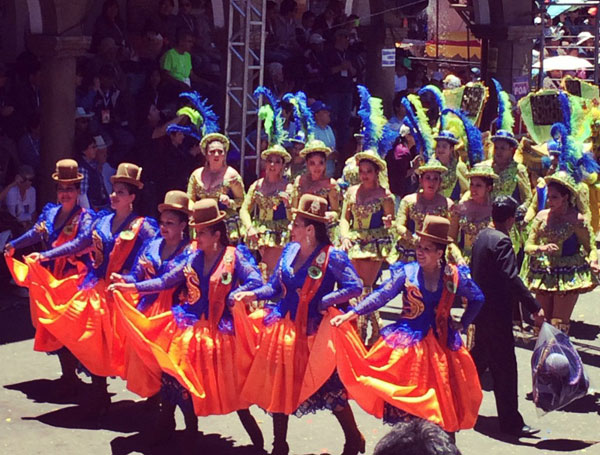The Carnival of Oruro is a religious festival dating back more than 200 years that takes place in Oruro, Bolivia. It is one of UNESCO's Masterpieces of the Oral and Intangible Heritage of Humanity. Originally an indigenous festival, the celebration later was transformed to incorporate a Christian ritual around the Virgin of Candelaria (Virgin of Socavón), which takes place on March 2. The traditional Llama llama or Diablada became the leading traditional dance of the festival. Throughout the festival, more than 48 groups of folk dancers specializing in 18 different folk dances perform a pilgrimage to the Shrine of the Tunnel every Saturday of the carnival in a traditional parade.
Background
The native Itu ceremonies were banned by the Spanish in the 17th century, during their rule over Upper Peru. However, the Uru continued to observe the festival in the form of a Catholic ritual on Candlemas, in the first week of each February. Christian icons were used to conceal portrayals of Andean gods, and the Christian saints stood in for other minor Andean divinities. The ceremony began forty days before Easter.
Legend also has it that in 1756, a mural of the Virgin Mary miraculously appeared in a mineshaft of the richest silver mine in Oruro. Ever since, the Carnival has been observed in honour of the Virgen de la Candelaria (Virgin of the Candlemas) or Virgen del Socavon (Virgin of the Mineshaft). The most important elements of the Carnival now occur in and around the Sanctuaria del Socavon (Church of the Mineshaft).
Pre-Hispanic period
Called Jururu (Uru Uru) in ancient times, the area that is now Oruro was a religious pilgrimage center of the Andean world. Pilgrims would trek to the "Sacred mountain of the Urus", where they could call protective deities: wak'as, achachilas and apus. These deities included Jamp'atu Qullu (hill toad), Argentillo Arankani (hill lizard), Quwak (viper), the condor and Wakallusta, among others. After the Incan Empire took over the region, the Incans tried to introduce their religion by adding an evil demigod, WariDesam, and a sacred demigod, Apus waka.
Spanish colonization brought about a unique religious syncretism of Catholicism and Wari religion. The Virgin and the Devil from Catholic teachings were absorbed into local ideas of Pachamama and Tio Supay, a blending of religious symbolism that can still be seen during the Carnival.
Modern carnival
The modern festival demonstrates the ongoing pagan-Catholic blend of religious practice in the region. The carnival starts with a ceremony dedicated to the Virgen del Socavon. Marching bands compete simultaneously in the grotto of Pie de Gallo on Sunday, which is the greeting to the Virgin. The highlight of the festival is the three-day-and-three-night parade of 48 groups of folk dancers over a four kilometer route to the sanctuary of the tunnel. Three days prior to this Saturday pilgrimage, people visit the symbolic pagan condor. A week after the pilgrimage, they visit the snake south of the city, the toad to the north and the ants to the east.
The pilgrimage culminates in the enactment of two medieval-style mystery plays. The first is about the Spanish conquest and the other revolves around the classical battle between good and evil, with the Archangel Michael ultimately triumphing over the Devil and the Seven Deadly Sins. The latter play was introduced by Catholic clergy in 1818.
In all, there are over 28,000 dancers, about 10,000 musicians in 150 bands, 400,000 visitors stretching over four miles. The bands themselves have a national festival on the Monday before Carnival weekend, that is aired on Bolivian television and its attended by the President of Bolivia and government authorities.













